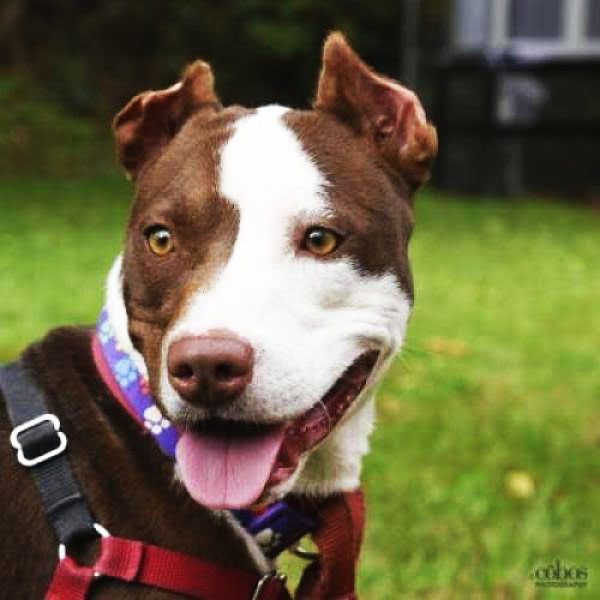“Aggressive breed,” a dangerous misnomer, has caused unnecessary deaths for pit bulls all over the nation.
Breeds like Pit Bulls, Boxers, Rottweilers, and Doberman Pinschers are more likely to cause fear and harsh judgment from passersby. This is because of a long history of dog fighting and fake news.
Pit Bulls, however, have gotten the worst of it. Likely you, without a second thought, steer clear; apartments and rental homes won’t allow them; even shelters are reluctant to take them in.
Many will argue that these dogs are bred for fighting.
They’ll cite recent dog attacks to credit themselves, but what we tend to ignore is why these dogs are known to attack in the first place.
In an interview with Bronwen Dickey, author of Pit Bull the Battle over an American Icon, Simon Worrall asks her about the aggressiveness of the breed, to which she replies, “it’s not one breed, it’s four. There’s the American Pit Bull terrier; the American Staffordshire terrier, which was the American Kennel Club conformation breed…. There’s the Staffordshire bull terrier, which has been a conformation breed since the 1930s; and the newer breed called the American bully, which was derived from the American Staffordshire terrier in the 1990s.”
While the first, the American Pit Bull terrier, was known to be a fighting dog, the other three were show dogs.
However, many people will put any dog with a big head and short hair into the “Pit Bull” category. Therefore, creating the myth that many dog attacks are the responsibility of this breed.
During WWI and the Depression, these dogs were popular with blue collar workers. They were all-American dogs, easy and average. However, in the 1950s, kennel club breeds became the American favorite, and Pit Bulls were mostly forgotten.
Later, in the 1970s, a social movement to end illegal dog fighting caused a media boom where dogs made the front page of every paper.
Unintentionally, they created wild myths about fighting dogs, like their extremely powerful jaw pressure. As the American public became more frightened and intrigued, the reputation of Pit Bulls became worse and worse.
Today, dog fighting is still a problem but is slowing significantly.
Nevertheless, the national fear of Pit Bulls persists. Many shelters reject them, cops will shoot them onsite regardless of what they’re doing, and many are too afraid to adopt them. In order to fight this stigma and offer a home to these sweet dogs, local Asheville shelter, Brother Wolf, has not only taken in “aggressive dogs,” but kept them in their care until they are rehabilitated and adoption ready.
Carissa Collinge, the volunteer manager at Brother Wolf, explains that since BWAR’s foundation in 2007, the live release rate for Buncombe County went up exponentially, from 36% to its current 95%. Brother Wolf’s anti-euthanasia policy has helped it achieve its 95.7% live release rate.
They are known for taking in the “top 10%” of the most challenging dogs: the ones who need the most behavioral correction, rehabilitation, and socialization. They typically have 50-80 dogs in the shelter at a time, and 400-500 dogs in their foster system. They can house and rehabilitate so many dogs because of their volunteers and foster parents.
Collinge estimated they have about 2,000 volunteers who were active within the last 6 months, and BWAR couldn’t have supported so many animals without them. They help change the reputation of dogs by putting their volunteers through extensive training in order to handle their most difficult dogs. Many of the dogs that come into their care are traumatized or nervous. Abandoned dogs can lose trust in people and become aggressive. In order to change this behavior, the dogs have to be resocialized and rehabilitated through positive reinforcement. The purpose of these shelters and programs are to never give up on a dog, regardless of breed.
According to the Save-A-Bull Rescue website, Pit Bulls are not only the most euthanized breed but also the most bred in America.
This means they not only are they getting killed at alarming rates, they’re experiencing extreme overpopulation. There are an estimated 3-5 million Pits in America, 33% are in shelters. “About 75% of municipal shelters euthanize Pit Bulls immediately upon intake, without them ever having any chance at adoption,” that’s 1 million Pits per year. Only about one in 600 Pits born in America will ever have a loving home.
So what can we do?
Spay, neuter, educate, and volunteer. Many shelters don’t have the ability to be no-kill because of overcrowding and the pet trade– people would rather get pet store or purebred puppies than shelter dogs. However, shelters like Brother Wolf who have a complex network of volunteers, takes advantage of foster parents in order to have enough space for all of their dogs.
What many people don’t realize is that all dogs share about 99.8% of their DNA, they’re all the same species. Meaning, the slight differences that make them either a Pit Bull or a Chihuahua, doesn’t make them more or less aggressive.
Likely, you have a local No-kill shelter too. In order to save the precious lives of our beloved best friends, spread the word. Fight stigma and help out your local shelter.








